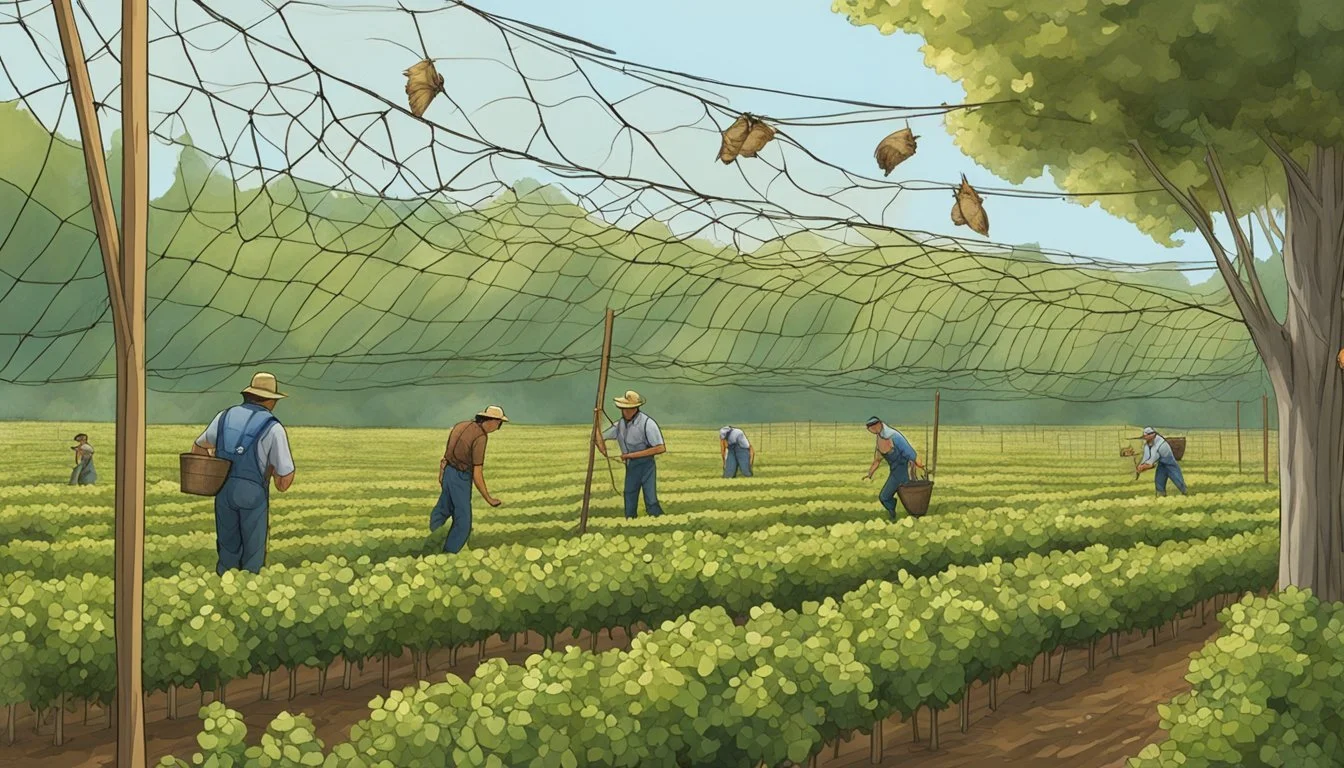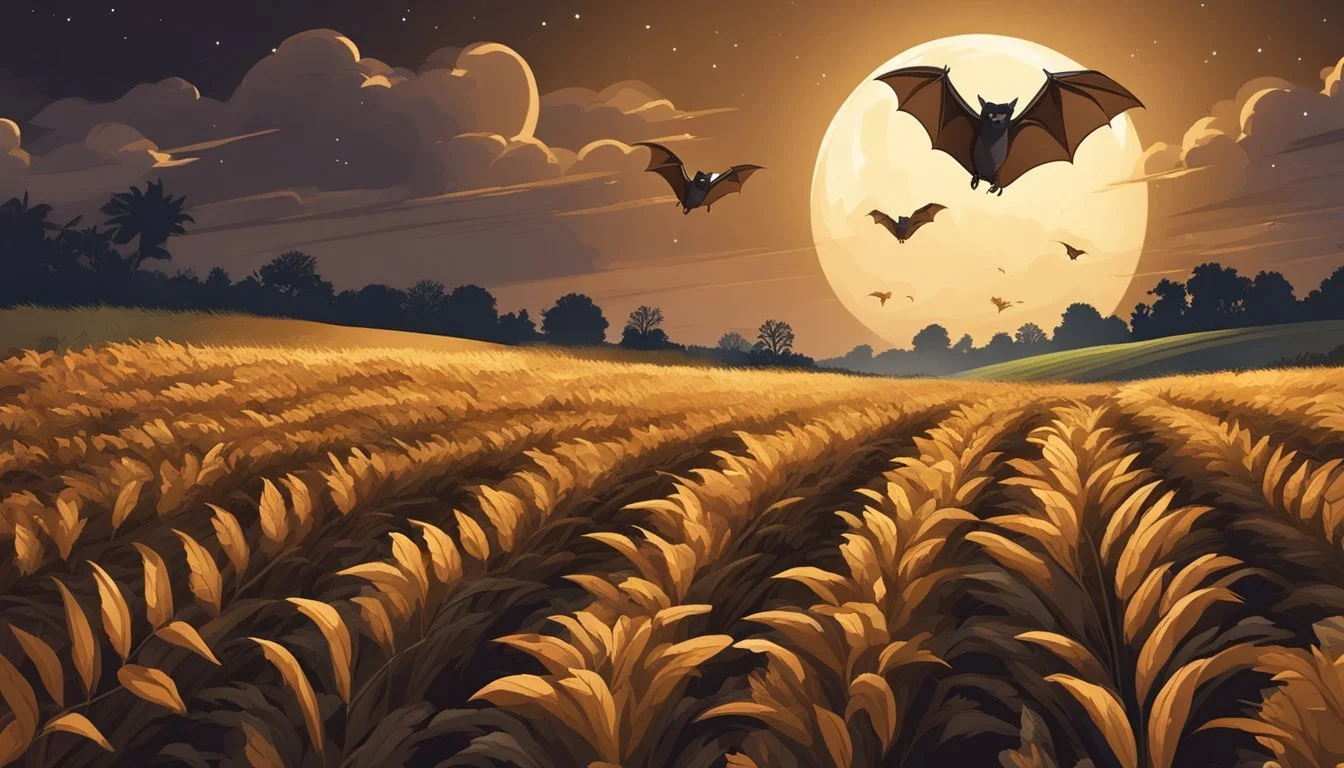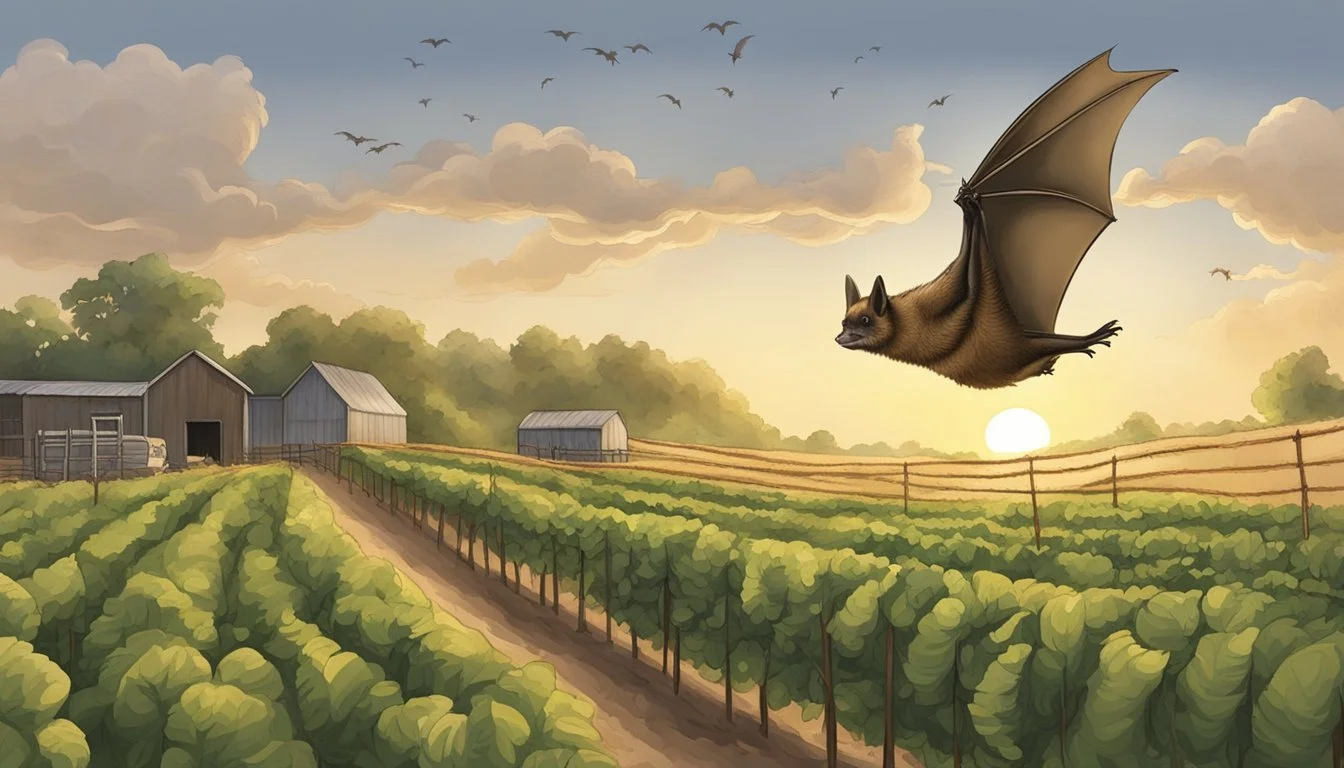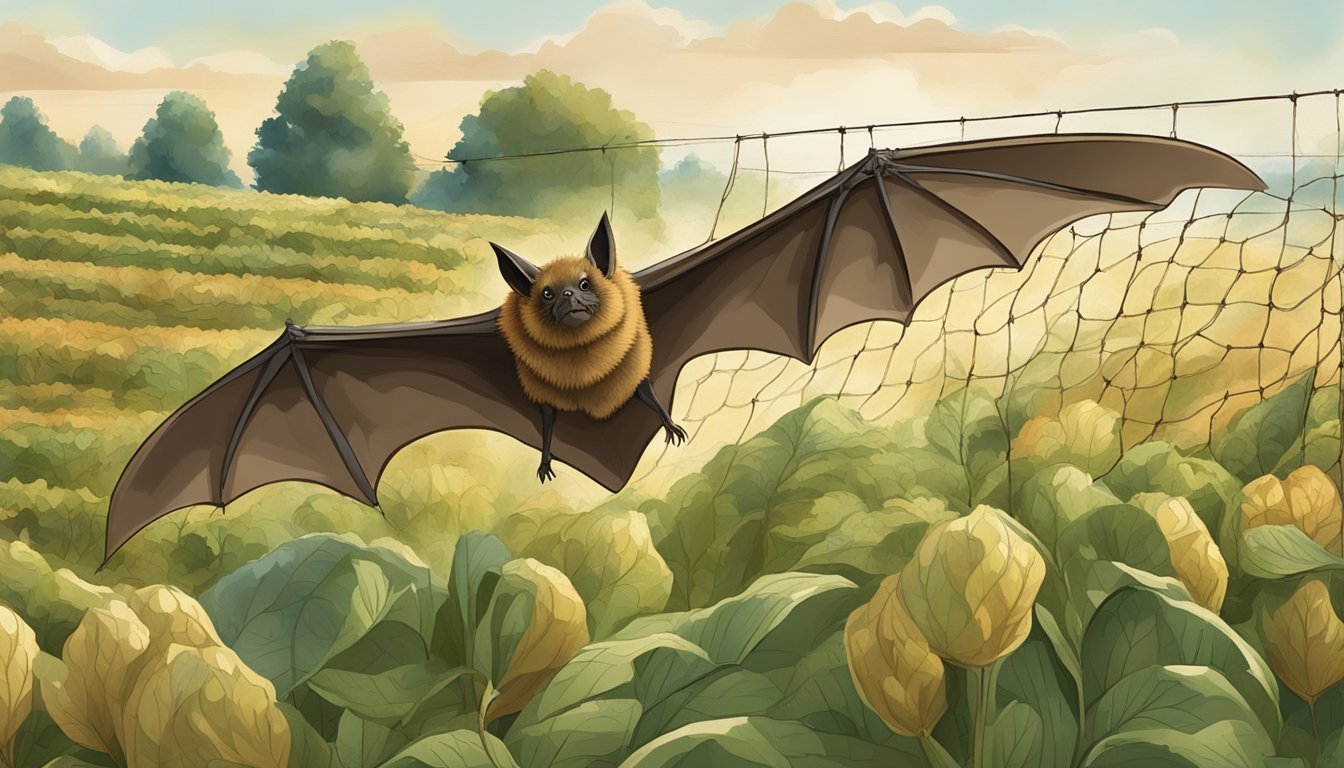Protecting Crops from Big Brown Bat
Integrated Pest Management Strategies
Big brown bats (Eptesicus fuscus) play a crucial role in maintaining healthy ecosystems, especially in agriculture. As nocturnal creatures, they are adept at controlling pest populations, devouring thousands of night-flying insects that can damage crops. Their appetite for agricultural pests makes them invaluable allies for farmers, reducing the need for chemical pesticides and helping to sustain a balanced environment.
While big brown bats are beneficial for pest control, the relationship between them and agriculture is complex. Their roosting and foraging habits can sometimes lead to conflicts with human activities. Effective strategies are essential to protect crops from potential contamination by bat droppings without jeopardizing the bats' health and the environmental benefits they provide.
Understanding the environmental impact of big brown bats is necessary for creating informed management plans that support agricultural productivity. Through education and the implementation of targeted conservation efforts, it is possible to appreciate the essential role these bats play in pest control while safeguarding crops and supporting sustainable farming practices. Properly addressing this balance is vital not only for agriculture but also for the broader health of the ecosystems in which both bats and humans coexist.
Understanding Eptesicus Fuscus
The Big Brown Bat, scientifically known as Eptesicus fuscus, plays a crucial role in ecosystems by controlling insect pests, but it can also pose challenges for crop protection. This section will explore the species, its habits, and its life cycle.
Species Overview and Range
Eptesicus fuscus is a prevalent bat species found extensively across North America, with a range extending from southern Canada through the United States to Central America. Unlike the Little Brown Bat, the Big Brown Bat is more adaptable to diverse environments and is often seen in suburban areas.
Diet and Foraging Behavior
Big Brown Bats are insectivorous and play an important role in ecosystem service by consuming a variety of nocturnal insects, including beetles, moths, and stink bugs, which are common insect pests to crops. They use echolocation to navigate and forage, usually hunting twice each night.
Roosting Habitats
These bats have versatile roosting habits, taking shelter in natural and man-made structures. Common roosting sites include caves, mines, and buildings. In urban areas, bat houses are provided to encourage roosting away from human dwellings.
Reproductive Cycle and Maternity Colonies
The reproductive cycle of the Big Brown Bat involves forming maternity colonies, usually in warm, dark places like attics or unused buildings, where females gather to birth and raise their pups. Monitoring these sites is crucial for understanding population health and dynamics.
Big Brown Bats and Agriculture
Big brown bats contribute significantly to maintaining ecosystem health through their role in pest suppression, thus enhancing agricultural production and crop yield. They also provide valuable guano that acts as a natural fertilizer, bolstering soil health and indirectly benefitting pollination and seed dispersal.
Pest Suppression Services
Big brown bats are an integral component of Integrated Pest Management by naturally controlling insect populations. As insectivores, they consume vast amounts of agricultural pests, which helps reduce crop damage and the reliance on chemical pesticides. Studies have shown that big brown bats may increase their consumption of pest species in response to high insect pest abundance, as revealed through their dietary analysis from DNA metabarcoding of guano. This results in substantial savings for farmers, leading to improved crop yields and ecosystem services.
Guano as Fertilizer
The droppings, or guano, of big brown bats are a powerful fertilizer, rich in nutrients that are essential for soil health. Use of bat guano in agriculture can enhance soil properties and benefit crop yield without the environmental impact associated with synthetic fertilizers. Conservation efforts are important to maintain healthy bat populations, not only for pest suppression but also to sustain the availability of guano for fertilizer.
Pollination and Seed Dispersal
While big brown bats primarily serve as pest suppressors, bats as a group play a crucial role in pollination and seed dispersal. Their interaction with flowers during feeding contributes to the species diversity of plants and aids in maintaining the balance of various ecosystems. The presence of diverse plant species in agricultural landscapes can further support ecosystem health and resilience.
By recognizing the multiple ecosystem services provided by big brown bats, including pest suppression, the use of guano as a natural fertilizer, and their indirect role in pollination and seed dispersal, it becomes evident that these creatures are invaluable allies in sustainable agricultural production and the broader health of ecosystems.
Threats and Conservation
Effective bat conservation strategies are crucial to mitigate the impacts of habitat loss, disease, and man-made threats on big brown bat populations across North America.
Habitat Loss and Environmental Changes
Big brown bats are adaptable creatures, often found in a variety of environments, from forests to deserts. However, the survival and health of these bats heavily rely on habitat heterogeneity, which is currently threatened by deforestation and urbanization. Continuous habitat loss poses a significant threat, as it reduces the availability of roosting and foraging sites, thereby impairing the bats' ability to thrive.
Diseases Affecting Bats
White-Nose Syndrome (WNS) has emerged as a devastating disease among bat populations, particularly in North America. This fungal infection targets bats during hibernation, leading to high mortality rates. WNS not only affects the bats' health but also has a ripple effect on ecosystems that rely on bats for pest control and pollination.
Human-Made Hazards
Bats face numerous human-related threats, including wind energy developments leading to habitat fragmentation and direct fatalities through collisions. Additionally, bats suffer from chemical exposure, primarily due to pesticides, which can accumulate in their bodies and cause long-term harm. Efforts to reduce these impacts are integral to bat conservation and indirectly protect human health, as bats aid in controlling insect populations that could otherwise spread diseases or damage crops.
Integrating Bats into Pest Management
Integrating bats into agricultural ecosystems can enhance pest control and potentially increase crop yields. This section explores effective methods of encouraging bats to participate in pest management.
Best Practices and Bat-Friendly Farming
Farmers can adopt Integrated Pest Management (IPM) practices that include biodiversity as a cornerstone for controlling pest abundance. By reducing insecticide use, farmers create a safer environment for bats, encouraging natural predation. They also promote agricultural intensification in a sustainable way that supports both crop yields and biodiversity. Maintaining and restoring hedgerows and forest edges provides habitat use options for bats, contributing to a balanced ecosystem.
Designing and Placing Bat Houses
Bat houses are a practical solution for attracting bats to farmlands. The design of these structures should ensure adequate warmth and protection for the bats, while placement involves strategic positioning near water sources and away from artificial lights. By understanding bats' habitat use preferences, farmers can place bat houses in places where they are most likely to be utilized, thus enhancing the efficacy of these natural predators in controlling pests.
Legal Protection and Conservation Programs
Legal frameworks at the national and local levels provide protection for bats, recognizing their role in maintaining healthy ecosystems. Farmers and local communities are encouraged through community engagement efforts to participate in bat conservation programs, which often include erecting bat houses and restoring habitats. By adhering to legal protections and engaging in conservation programs, the agricultural community plays an active role in promoting a healthier environment.
Frequently Asked Questions
This section provides a concise overview of common concerns regarding the management and understanding of big brown bats in agricultural settings.
How can farmers deter big brown bats from their fields?
Farmers may use methods such as installing bat houses to redirect big brown bats to more suitable roosting areas away from their crops.
What are effective methods for protecting crops against big brown bats?
To protect crops, farmers can cover them with netting or use ultrasonic devices to discourage bats from foraging in specific areas.
What role do big brown bats play in the ecosystem, and how does this affect crop protection?
Big brown bats contribute to the ecosystem by controlling insect populations. This natural pest control can be advantageous for crops, but special attention to bat behavior is necessary to avoid crop disturbances.
Can the presence of big brown bats be beneficial for crop pest control?
Yes, the presence of big brown bats can be highly beneficial for pest control, as they consume large quantities of insects that may otherwise damage crops.
What measures can be taken to coexist with big brown bats without harming crops?
Farmers can implement coexistence measures like timed harvesting and the use of deterrents to minimize crop damage without harming the bat population.
What are the natural predators of big brown bats that can aid in crop protection?
Natural predators of big brown bats, such as owls and hawks, can help in maintaining a balanced ecosystem, indirectly aiding in crop protection.





